
Aaron Foyer
Vice President, Research and Analytics
Will harvesting wood for energy help or hurt us?

Vice President, Research and Analytics
By the 13th century, the Viking Norsemen had started to settle down. Gone were the days of raiding the Frankish Carolingian Empire and terrorizing Alfred the Great in his Kingdom of Wessex. Instead, the culture of the Viking people gradually changed, establishing kingdoms and more centralized governments in northern Europe in the region, known today as Scandinavia.
The reformed Vikings then began to pick up more domestic hobbies, as anyone who has settled down can probably relate. Woodworking, especially, became quite popular.
Branching out: The Nordics took advantage of the abundance of pine, spruce and birch in the forests across modern-day Sweden, Norway and Finland and advanced the engineering of wooden structures. This is best exemplified in what are known today as stave churches – masterpieces of wooden architecture from the medieval period using vertical posts or “staves” made of oak or pine.
The regional use of timber for architecture continued to evolve, with Scandinavian Modernism eventually becoming one of the most globally influential building styles in the 21st century.
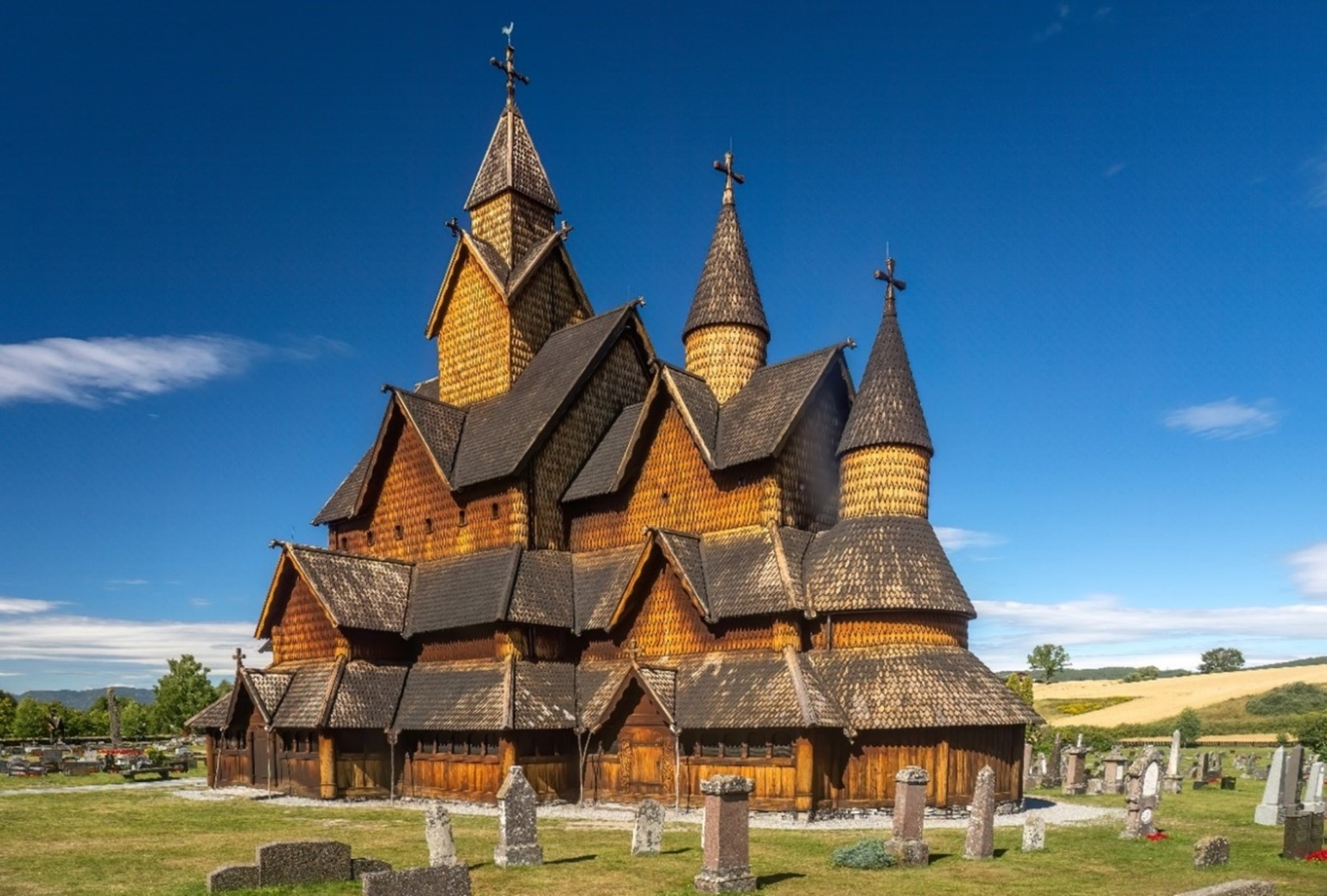
The Heddal Stave Church in Norway, the largest of its kind and built in the 13th century // Adobe Stock
Both the Scandinavian and Baltic countries in northeastern Europe are still heavy users of wood. Sweden, in particular, maintains strong cultural connections with its forests and timber, demonstrated by IKEA Småstad nightstands. And the region’s use of forests extends beyond architecture and minimalist home décor.
On energy: Scandinavian and Baltic countries have the highest European share of total energy coming from biofuels and waste, much of it biomass. If done responsibly, this is often said to be both renewable and carbon neutral—carbon released by one tree gets absorbed by the next.
The carbon-neutral piece is where the story gets both interesting and controversial. If rather than using wood and releasing carbon dioxide into the atmosphere to be re-absorbed, the greenhouse gas was captured and removed completely from the carbon cycle, bioenergy would become carbon negative. Solar-powered direct air capture using trees, known formally as bioenergy with carbon capture and storage. Or just “BECCS.”
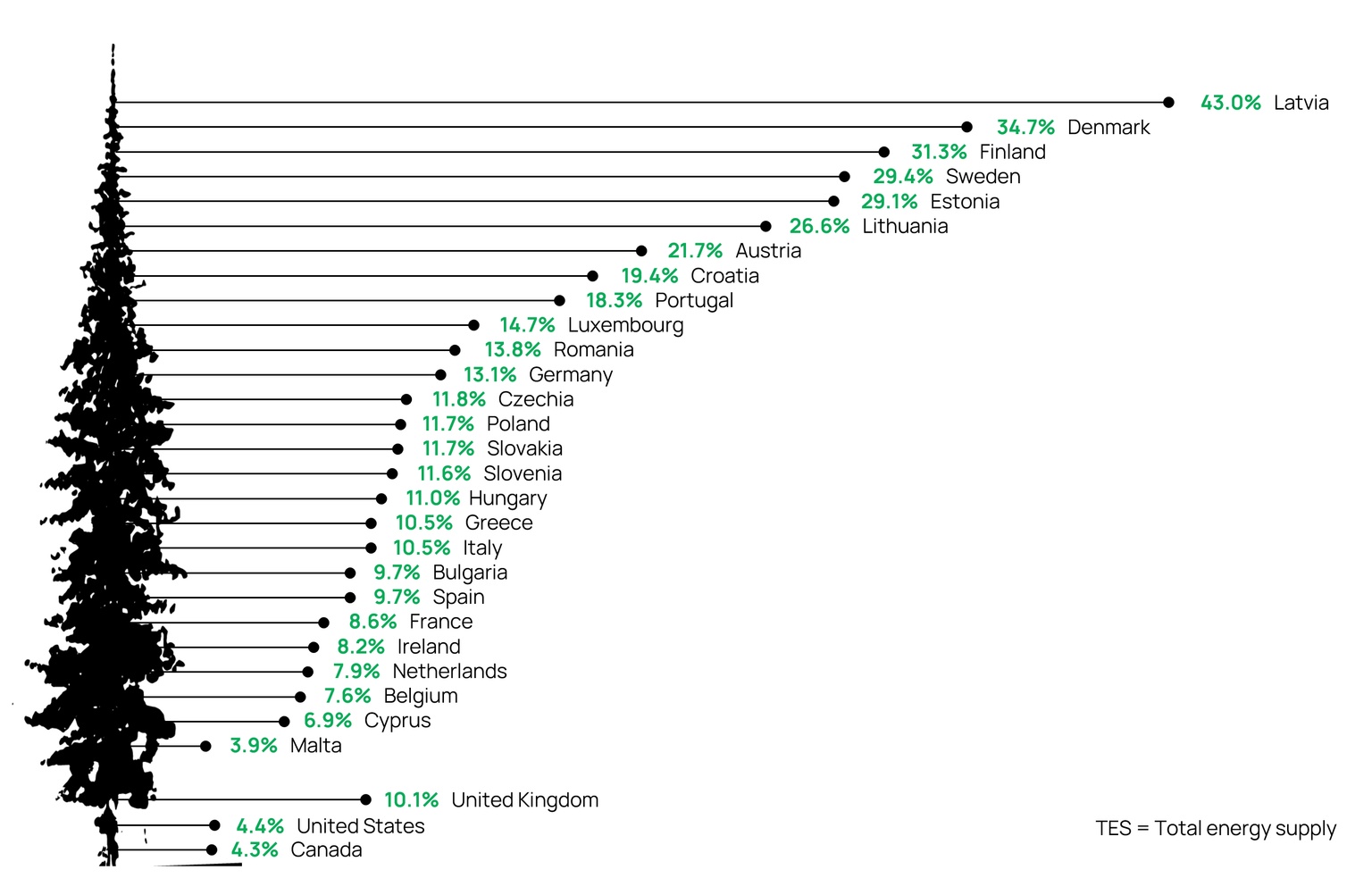
Source: The International Energy Agency
UK renewable power generating company Drax announced plans last month to invest $12.5 billion to build BECCS projects in the US. That would be the largest announcement ever in the industry. At the same time, leading environmental NGOs like the Natural Resource Defense Council believe the entire movement is a “hoax” and bioenergy could actually increase global greenhouse gas emissions.
So, which is it: trick or treat? Bloom or blight?
To start with, supporters of BECCS believe the technology helps solve two problems: providing low-carbon energy and, perhaps more importantly, carbon dioxide removal (CDR). People often lose sight that CDR will be needed to both undo future emissions and reverse the emissions we’ve already released.
This year’s State of Carbon Dioxide Removal led by the University of Oxford estimates the world will need to remove 7 to 9 billion tonnes of carbon dioxide from the atmosphere every year to hit climate targets. Globally, some ~2 billion tonnes are removed annually, with ~99% coming from conventional methods like forest management, wetland and peatland restoration and soil carbon restoration. Some combination of conventional and novel carbon removal technologies will be needed to achieve the rest.
The underlying secret of the technology is its focus on biogenic carbon dioxide—emissions that come from biologic sources. This can include everything from decomposing plants and forest fires to bioenergy plants and organic waste in landfills.
The budget: All biological sources combined produce ~440 gigatonnes of biogenic carbon dioxide every year. That’s roughly balanced out by plants, algae and cyanobacteria that absorb 450 gigatonnes per year. This is a natural balance and why removing forests is so damaging—it negatively alters the carbon balance sheet. And add to that another 38 gigatonnes from human energy-related emissions and you’ll see why there’s a need to remove excess carbon dioxide from the atmosphere.
BECCS runs that math in reverse. Capturing carbon dioxide that would have otherwise been emitted naturally helps tip the carbon balance sheet back in our favor.
Society is also responsible for generating new biogenic carbon dioxide. Agriculture, forestry and biofuels all play their part in a modern society but generate greenhouse gas emissions along the way.
There are an estimated 3 trillion trees on Earth, about 400 for every human. Cutting these down to create bioenergy is where the controversy of the practice lies. While trees dying and regrowing are carbon neutral, laying waste to forests to produce wood pellets for incineration is often not. On top of emissions created from forestry operations, logging transport and mills, trees take decades to regrow, creating a window of time without their significant carbon removal benefit.
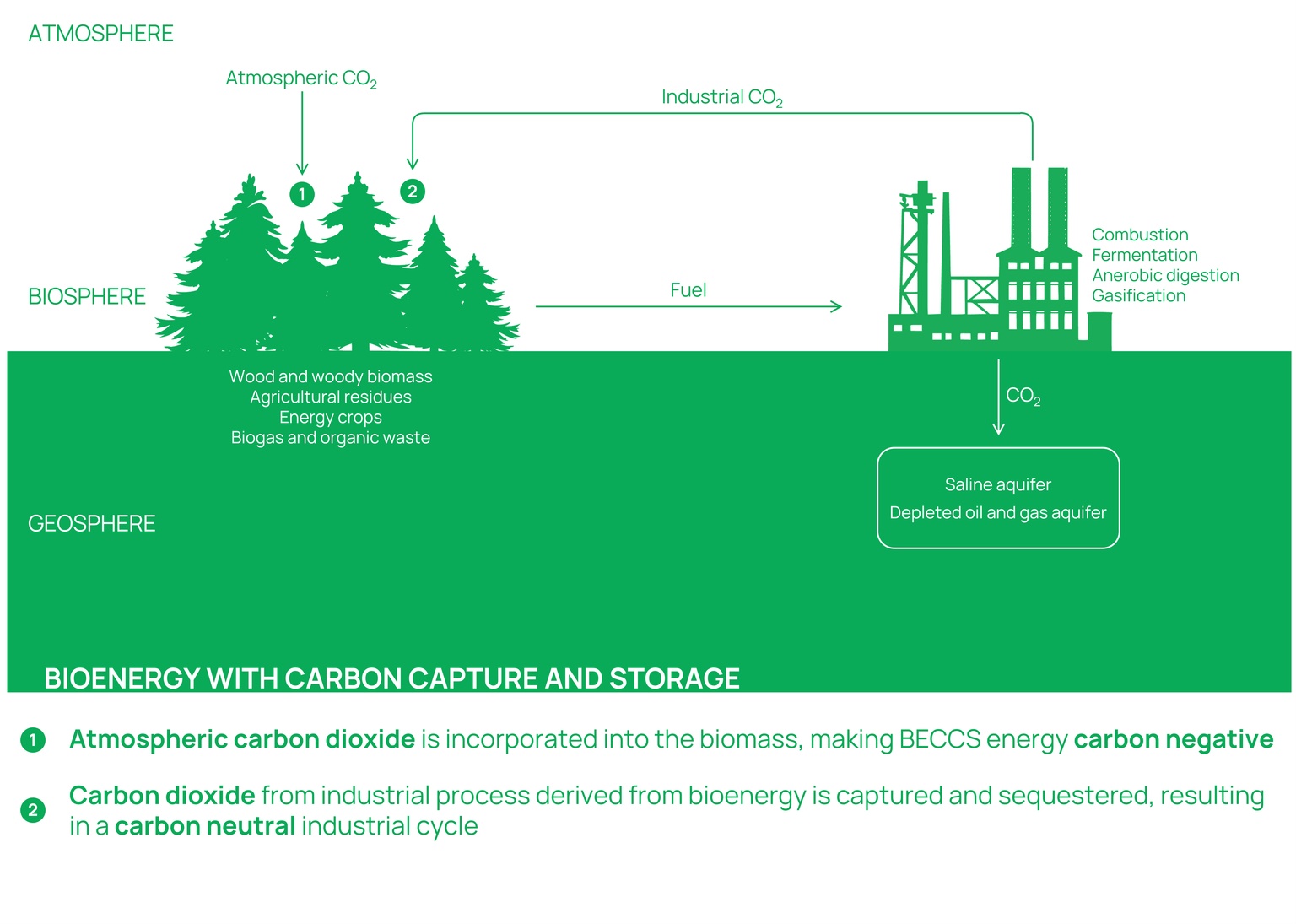
Source: Orennia
A study published in Environmental Research estimates the carbon debt payback period, or the time a tree takes to hit carbon neutrality, ranges from 44 to 104 years. Trees cut down today at best won’t be carbon neutral until 2068. Not exactly ideal for 2050 climate targets. Given the importance of the next 25 years in addressing global greenhouse gas emissions, there are situations where the use of BECCS could make things worse.
But not all situations.
The key to wood-based BECCS is handling forests effectively, both through their controlled use, growth and conservation, more commonly known as forest management, and forestry. Done right, it can be a responsible and effective way to reduce emissions. Done poorly, forest management can make things worse.
The Great Boreal North: Canada, the second-largest country in the world, is 40% covered by trees, namely large boreal forests. Actively managing forests is a daunting but important task for the country, handled by a blend of provincial, territorial and federal groups.
Parks Canada is responsible for managing a small sliver of Canadian forests, including national parks. The federal agency published a report in 2022 saying many of the areas in Jasper National Park were at risk due to a lack of forest management practices. In some regions, 88% of the forests were primed for fire, with high levels of deadwood that had been amplified by pine beetle activity. Just two years later, in July 2024, two simultaneous forest fires bore down on the picturesque town of Jasper and burned a third of it away. It was a collective and resonant emotional loss for Canada that mirrored the American loss of Lahaina to fire the year before.
Events like Jasper can be avoided or limited with bioenergy being a key solution.
Sweden does it right: The Scandinavian nation is nearly 70% covered in forests, one of the highest shares amongst developed nations, yet has one of the lowest rates of forest fires. How’s that possible? According to the International Renewable Energy Agency (IRENA), the answer lies with forestry and forest management.
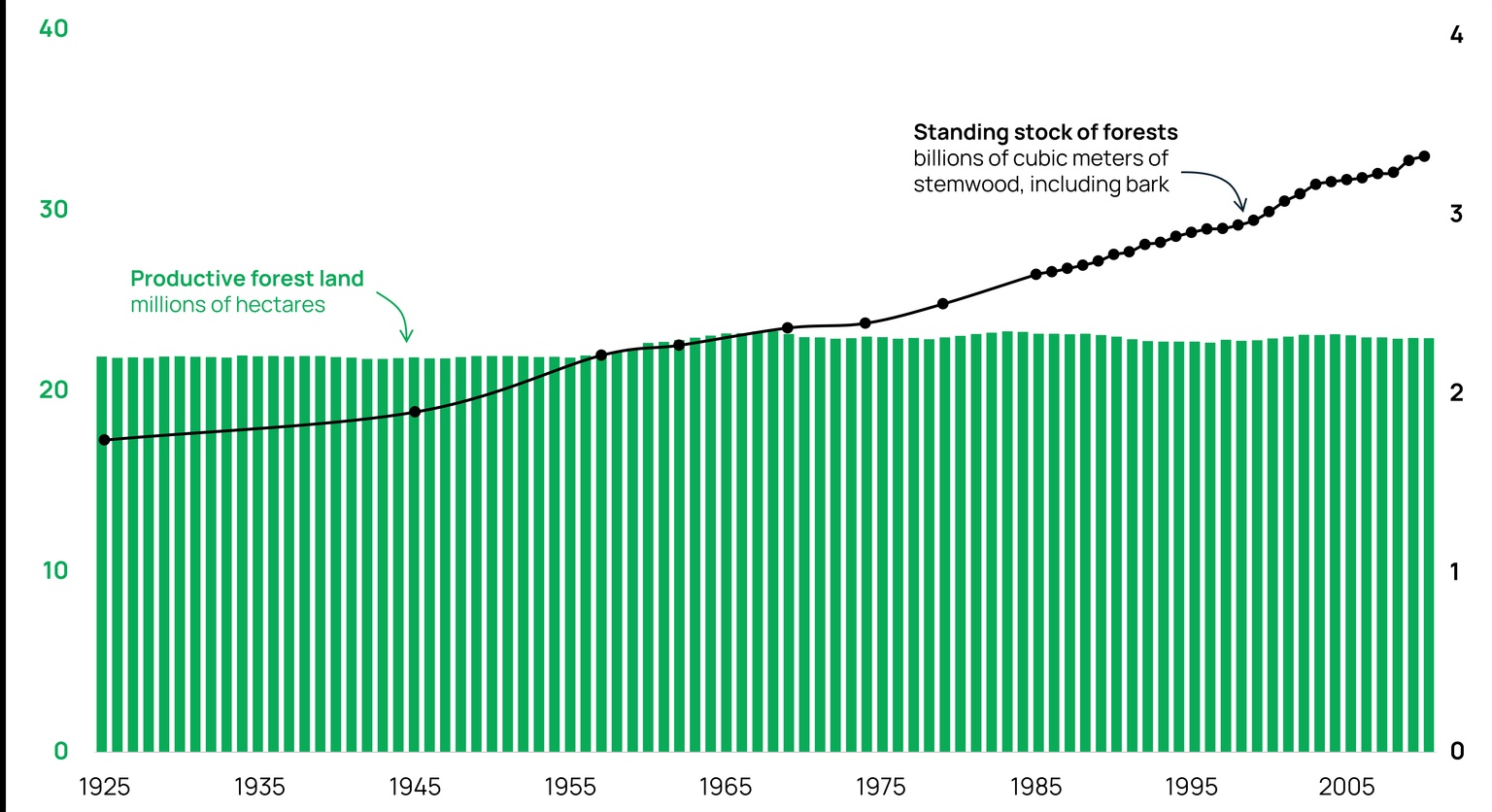
Source: The Swedish National Forest Inventory
Swedish forestry is one of the most active in the world (lots of pine is needed for all those Småstad nightstands). Nearly 75% of forestlands in the country are used for forestry, yet, contrary to what you might expect, the industry has been a surprising positive for the volume of living trees in the country. Over the past century, the area being forested in the country has remained effectively unchanged, yet the total volume of living wood in Swedish forests has nearly doubled. In the context of BECCS, this means Sweden’s hyperactive foresting has helped vastly increase, not decrease, the amount of carbon its forests are absorbing.
The other key to Sweden’s success is effective forest management. Not only does active management lead to higher tree growth, but managing forests manages fires. Forest fires spread more quickly in old forests filled with dead trees and undergrowth. Forest management helps harvest much of this deadwood, which is typically low-quality biomass better suited to burn for bioenergy than to structure Swedish saunas. As a result, Sweden has one of the lowest levels of forest fire rates of developed nations, usually no more than a few hundred hectares burned per year, per IRENA.
To make wood-related BECCS work sustainably and profitably, there are three key ingredients: sustainable forest production, ideal reservoirs for carbon sequestration and laws that put a price on carbon. As it happens, Canada has all three.
On top of 310 million hectares of forests that need managing, Western Canada has some of the top saline aquifer sequestration reservoirs in North America with infrastructure being developed and a country-wide legislated price on carbon. Over and above federal carbon pricing, CDR credits for BECCS are currently trading at $160 per tonne of carbon dioxide, helping overcome its higher energy price.
Last year, ahead of Drax’s record-breaking American BECCS project announcements, the company submitted a letter to the Canadian government providing input for climate policy in the country underscoring the country’s bioenergy potential.
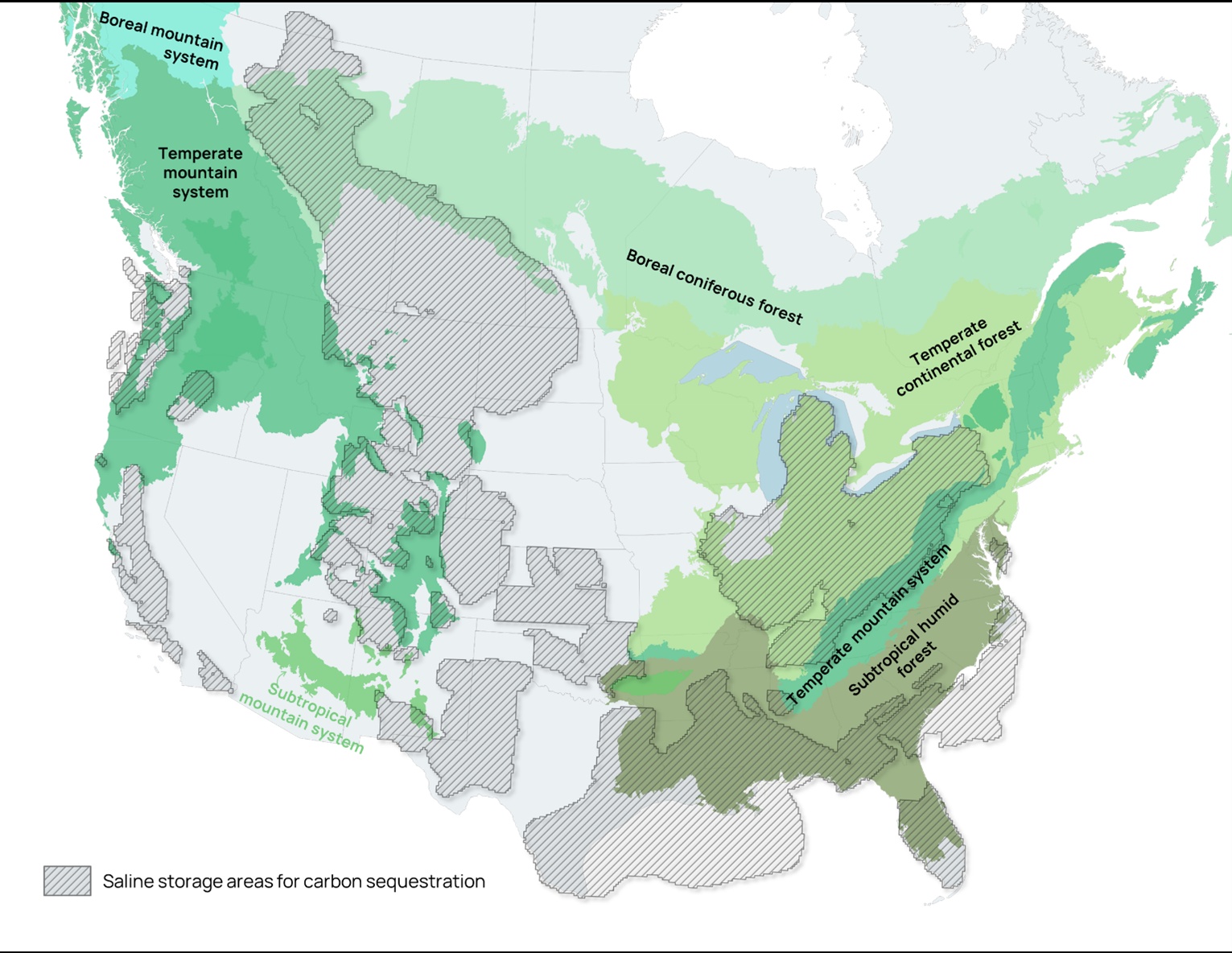
Source: Orennia, North American Forest Commission
“With the right policy framework, we believe that Canada could be an ideal location for a BECCS facility, given its access to one of the world’s greatest fibre baskets, well-established sustainable forestry sector, and suitable geology for CO2 storage,” the firm wrote.
There are other criticisms of BECCS, including that it might be a moral hazard. The main risk of a broad endorsement is that corporations may abuse the technology’s stated potential and start chopping down trees like they’re Paul Bunyan. This would quickly justify the concerns from groups like Natural Resource Defense Council. A forest-first approach similar to Sweden’s, where forest conservation and management dictates what can be harvested, should guide BECCS development. Not the other way around.
Less fire emissions: In addition to being used for carbon removal, BECCS can also help avoid sending additional carbon dioxide into the atmosphere, as out of control forest fires account for a meaningful share of global emissions.
In the now infamous summer of 2023, much of the US, including New York City, briefly turned into a scene from Blade Runner 2049 as smoke billowing from forest fires in Eastern Canada was blown south. In total, carbon monoxide and carbon dioxide emissions released from the 2023 Canadian forest fires amounted to 2.5 to 3 years of Canadian economy-wide emissions, according to a study published in Nature.
If the forests are going to burn anyways, let’s at least harvest the energy and sequester the carbon.
Bottom line: The Vikings took a while to lay down roots. Their culture didn’t work everywhere, but where it did was settled and flourished into some of today’s most revered and admired countries. Their strong culture ties to the forests led to sustainable relationships with wood and biomass that today accounts for a large share of their total energy supply.
Like the Vikings, BECCS won’t work everywhere, either. Maintaining healthy forests is critical over the coming decades as a key carbon sink to manage the global carbon balance sheet. But in some key areas, with the right mix of forestry needs, geology and the rule of law, the timber is ready to fell.
+Bonus listening: Alberta’s Bioenergy Advantage
+Bonus reading: State of Carbon Dioxide Removal
Data-driven insights delivered to your inbox.